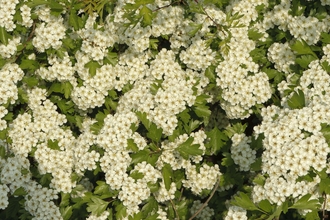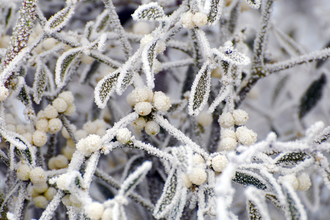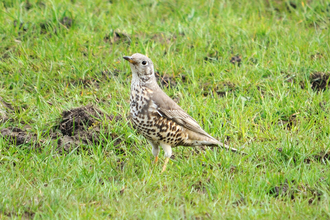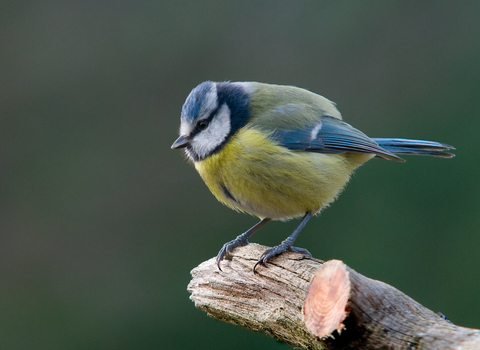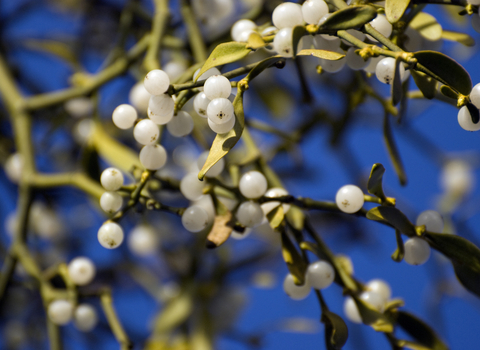
©Zsuzsanna Bird
Mistletoe
Kissing under the mistletoe is a much-loved Christmas tradition, making this plant familiar to us all. It actually grows as a parasite on trees - look for it hanging off branches in large balls during winter.
Scientific name
Viscum albumWhen to see
January to DecemberSpecies information
Category
Statistics
Diameter: up to 1mConservation status
Common.
Habitats
About
Floating in lifeless trees, growing from thin air, it's easy to see how people in past times thought mistletoe was magical. In fact, mistletoe is a partial parasite and gets water and much of its food from its host tree, whilst also feeding itself through photosynthesis. It especially likes apple, lime and hawthorn trees. Mistletoe berries are a favourite of birds such as blackcaps: they eat the fat-rich pith, but leave the seed attached to the branch, accidentally spreading the seeds and making it possible for a new plant to take root.How to identify
Mistletoe is an evergreen, but is best seen during the winter months (November to February) when great balls of it hang from the bare branches of host trees. Look for the familiar, white sticky berries (poisonous to humans) and the branching stems with small, oval leaves.Distribution
Mainly found in Central and Southern England.Did you know?
One of our most practiced Christmas traditions - kissing under the mistletoe - comes from Victorian times when a boy could win a kiss from a girl for each mistletoe berry he picked from his bunch. This game probably originated from a Norse legend in which the goddess Frigga declared mistletoe a symbol of love.The Wildlife Trusts are working with other organisations on projects to help conserve our orchards and the wildlife they support; for example, many local Trusts look after traditional orchards, or are cultivating orchards, on working farm nature reserves. You can help mistletoe to spread by growing it in your own garden - extract the seeds and sticky juice from the berries of a cutting and wipe them on a young branch of a suitable tree, such as an apple.

